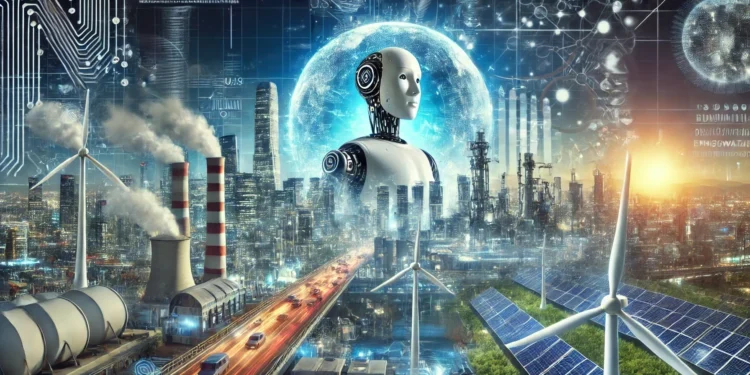Falling Short of 2030 Emissions Targets
In the sweltering summer of 2024, where heatwaves continue baking pavements, the United States finds itself at a crossroads. The nation’s grand ambitions to slash greenhouse gas emissions are colliding head-on with the stubborn realities of the current economy. An economy in full flux and a political landscape as unpredictable as the weather patterns climate change has wrought.
A recent report from the Rhodium Group, a respected research firm with a knack for number-crunching, has laid bare the uncomfortable truth. Despite the Biden administration’s lofty pledges, America is set to fall short of its 2030 emissions reduction target. It’s a sobering wake-up call, akin to hitting the snooze button one too many times on a day when being late simply isn’t an option.
The goal, etched into international commitments and domestic policy alike, was clear. Cut greenhouse gas pollution by at least half come 2030, measured against the baseline of 2005 levels. It’s the kind of target that makes for great headlines and rousing speeches. But as any dieter knows, setting a goal is the easy part. It’s the follow-through that separates the winners from the also-rans.
The Inflation Reduction Act: A Game-Changer That Never Was?
Enter the Inflation Reduction Act of 2022, a legislative beast that promised to revolutionize America’s approach to clean energy. It was supposed to be the silver bullet, the game-changer that would propel the U.S. towards its climate goals with the force of a Saturn V rocket. And to be fair, it has moved the needle. But as the Rhodium Group’s analysis shows, even with this landmark legislation, the U.S. is only on track to achieve a 43% emissions reduction by 2030. Close, but in the world of climate change, close isn’t just not good enough – it’s potentially catastrophic.
So, what’s gumming up the works? For one, there’s the unexpected surge in electricity demand, driven by the voracious appetite of artificial intelligence and the ever-expanding universe of data centers. It’s a classic case of technological progress creating unforeseen complications. As Ben King, one of the report’s lead authors, put it with dry understatement, “This extra demand means emissions could have been lower by 2025.” It’s a bit like trying to bail out a leaky boat while someone’s drilling new holes in the hull.
Progress Amid Challenges: The Road to Decarbonization
But it’s not all doom and gloom. The U.S. has made progress, albeit slower than needed. Emissions dipped 1.9% in 2023, even as the economy grew – a sign that the long-sought decoupling of economic growth from carbon emissions might finally be taking hold. And compared to 2005, emissions in 2023 were down a respectable 18%. It’s progress, but in the face of rapidly accelerating climate change, it feels a bit like bringing a knife to a gunfight.
The Inflation Reduction Act, for all its shortcomings, has undeniably changed the game. It’s turbocharging the expansion of wind and solar power, and giving electric vehicles the jump-start they needed. Rhodium’s crystal ball shows a future where zero-emission sources could provide up to 88% of total electricity generation by 2035. It’s the kind of projection that would have seemed like science fiction just a decade ago.
Transportation, long the problem child of emissions reduction efforts, is also showing signs of reform. With stringent EPA standards cracking the whip, electric vehicles could make up nearly three-quarters of light-duty vehicle sales by 2032. It’s a revolution on wheels, promising to transform America’s love affair with the automobile into something a bit less toxic for the planet.
Political Uncertainty and the Race Against Time
But here’s the rub: all these rosy projections are based on current policies staying the course. And in America’s see-saw political landscape, that’s far from guaranteed. The specter of the November elections looms large, with the potential return of former President Trump threatening to throw a wrench into the delicate machinery of climate policy. It’s a stark reminder that in the fight against climate change, progress can be as fragile as it is hard-won.
As America races against the merciless clock of climate change, the path forward is fraught with challenges. It’s not just a test of technology or policy, but of political will and public resolve. The next few years will determine whether the United States can pull off a miracle, accelerating its emissions reductions to meet its ambitious targets, or whether it will join the ranks of well-intentioned failures in the face of our planet’s greatest challenge.
The world watches, alternating between hope and trepidation, as one of the planet’s largest emitters grapples with its climate destiny. In this high-stakes game of planetary poker, America has pushed its chips to the center of the table. Now, it’s time to see if it can deliver on its bet – or if the house always wins.
Acknowledgment: This article was inspired by and includes information from "AI Boom to Slow Pace of U.S. Emissions Reduction, Report Says" published on BnnBloomberg.ca. For more detailed insights, you can read the full article here.







